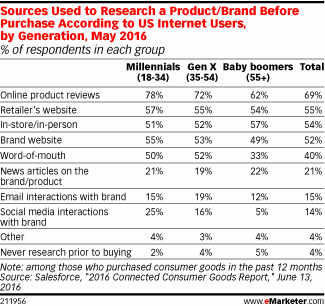Furniture retailers and manufacturers all want to make the home furnishings shopper happy. Whether the customer is browsing collections in a local store or researching options online, the shared end goal is to connect with that consumer, close the deal, and move merchandise.
Electronic data interchange (EDI), which you might call the original e-business tool, has been around long before omnichannel retail came onto the scene. While EDI is not new, its significance to omnichannel commerce cannot be overlooked. When furniture retailers and manufacturers have EDI running like a well-oiled wheel behind the scenes, they are much better positioned for omnichannel success.
Why? It’s because information — especially reliable, real-time inventory information — has never been more important in the history of retail. It is essential to meet the expectations of always-connected consumers. Study after study remind us that today’s shoppers are often browsing online before they buy.
They want transparency into product availability at their local furniture dealer, delivery lead times, pricing, and product details. While this customer will never see an EDI document, he or she expects the manufacturer or retailer to deliver answers that ultimately tie back to EDI, the information backbone of business-to-business (B2B) commerce.
Let’s take a step backward: What is EDI?
EDI is the electronic transmission (sending and receiving) of business documents, in a standardized format, between companies. It is the digital exchange of mission-critical information directly between different business’ computer systems. Purchase orders (PO), PO acknowledgments, invoices, advance ship notices, shipment confirmations, product catalogs, and other documents can be instantly and accurately exchanged with little to no human interaction.
For an example of how EDI supports omnichannel commerce, picture a furniture shopper who has her eye on an upholstered sofa. On her hometown furniture dealer’s website, she has even gone so far as to select an upholstery fabric in her favorite color and pattern for this furniture piece. Now she goes to check on the item’s availability. If the dealer has strong EDI with the sofa manufacturer and the fabric supplier, it will have up-to-the-minute information about exactly what is in stock, where inventory is located, what has been shipped and when products are due for delivery to the store or warehouse. This information might reside in a retail management system (RMS) or order fulfillment system that feeds information to the website and ultimately to the shopper. But before the information can be presented to the consumer, a salesperson or a customer service representative, it first must be transmitted and received via EDI, which is continually depositing the latest data precisely where it is needed.

Electronic data interchange connects the dots, enabling retailers, manufacturers, suppliers and logistics providers to share, analyze and collaborate on orders, shipping plans, catalogs, pricing and more. This communication can happen without time-consuming calls, emails or faxes required to get answers. In an August column about EDI, Dean Horowitz, Progressive Business Media president and Furniture Today publisher, wrote, “EDI is absolutely key to ensuring purchase orders, invoices and advance ship notices are quickly and accurately passed between computer systems. Its standardization of business documents enables buyers and sellers to overcome language barriers and format differences, as well as a slowdown associated with human intervention and interpretation.”
Modern EDI solutions are often cloud-based and use an open computing approach, making it affordable and easy to implement for home furnishing businesses of all sizes. When furniture manufacturers and retailers work with an EDI software vendor with an established industry track record, they will usually find that relationships already exist with many popular RMS and logistics providers. They can very quickly start exchanging EDI documents with their own customers and supply chain partners.
EDI frees furniture manufacturers and retailers to focus their talented staff on value-added activities such as building customer relationships, developing innovative new products and enhancing the shopper experience.
As Furniture Today’s Horowitz summed it up: “As we continue to eliminate the wasteful elements of our day so we can concentrate on the highest value ones, EDI is a clear example of how you and employees can spend more time on a demand-driven business instead of a supply-driven one.”
For more information about EDI, including MicroD’s Exim Commerce solution, contact solutions@microdinc.com.





